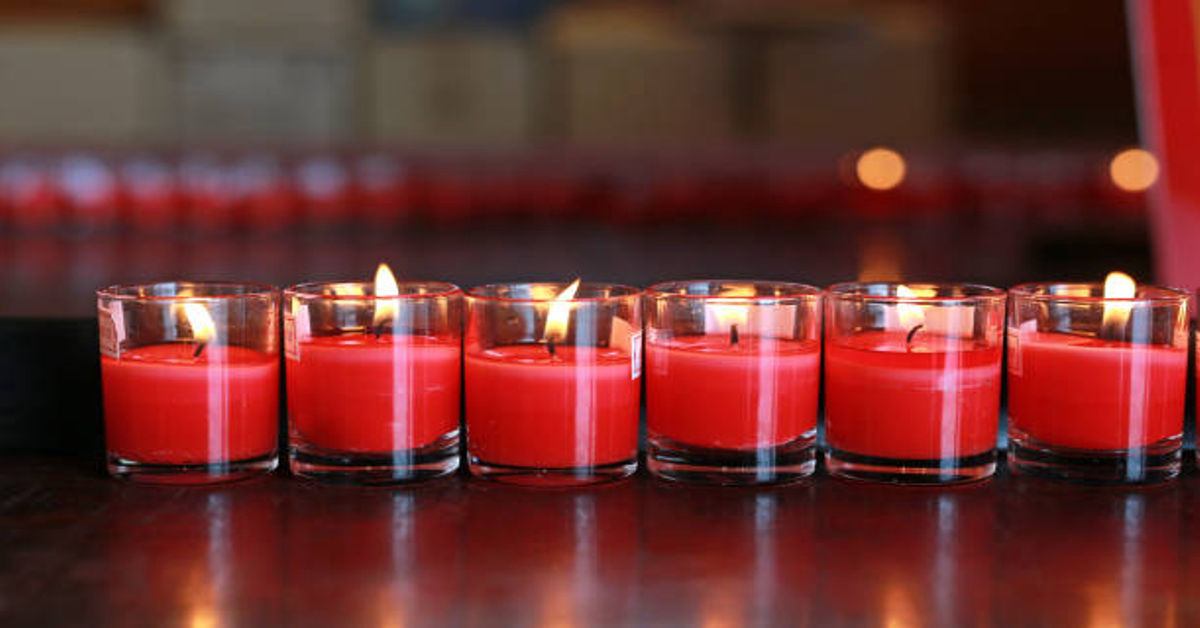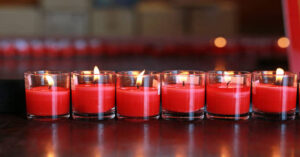Votive candles are small yet meaningful lights that have touched almost every culture and historical era in some way. Whether used in prayer, devotion, meditation, ceremonies, aromatherapy or simple home décor, they hold a unique place in spiritual and aesthetic traditions. Unlike ordinary candles that serve only for lighting or fragrance, votive candles also carry symbolism. They are often used as offerings, intentions, silent messages of hope, and emotional anchors. Their soft light and slow burn make them ideal for spaces where quiet reflection, wellness and devotion are encouraged.
This comprehensive guide explores everything about votive candles in detail, including their origin, symbolism, types, materials, benefits, placement, practical uses, buying considerations, crafting guides, and safety practices. Whether you are new to votives, planning to use them in a personal ritual, setting up a meditation space, operating a wellness center, or decorating your home, you will find this article rich in practical and meaningful insights.
What Are Votive Candles?
Votive candles are small cylindrical candles designed to burn for several hours and are usually placed in a votive holder. Their size generally ranges from 1 to 2 inches in height, making them compact and suitable for both personal and ceremonial use. Traditionally, votives have been used in religious rituals as offerings—a small flame symbolizing devotion, gratitude, prayer or wishes. Today, votive candles have expanded beyond religious settings and are frequently used for relaxation, aromatherapy, romantic ambiance, spa décor, event lighting and home interiors.
Votives burn slower than many other small candles because they are meant to liquefy as they burn, allowing the wax to pool inside the holder. This design ensures that the candle burns completely and evenly while also producing more light and aroma.
History and Symbolism of Votive Candles
Candles have existed for thousands of years, but votive candles have a distinct history rooted in devotion. Throughout centuries, people have offered lights to divine forces, ancestors, and loved ones as gestures of remembrance, gratitude, guidance and silent prayer. The flame of a votive candle is often interpreted as:
- Hope in darkness
- Guidance during difficult times
- Presence of divinity
- A physical representation of thoughts or wishes
- A bridge between the physical and spiritual worlds
Different cultures have attached their own symbolism. In some traditions, a votive candle expresses faith and intention. In others, it represents the presence of the soul or eternal memory of a loved one. Modern uses have also connected votives with personal healing, intention setting and emotional clarity.
Common Uses of Votive Candles
Votive candles are versatile and useful in many environments. Below are the most common uses:
1. Prayer and Devotional Practices
Many people light votive candles to accompany prayers and spiritual rituals. The flame becomes a symbolic extension of one’s intention, continuing to “pray” even after the person physically leaves.
2. Meditation and Mindfulness
The small, steady flame helps calm the mind, making votives ideal for guided meditation, breathing exercises and silent reflection.
3. Memorials and Remembrance
Votive candles are often lit at funerals, memorial services or anniversaries of loved ones passing, offering comfort and an ongoing tribute.
4. Home Ambiance
Their warm glow makes any space feel peaceful, intimate and inviting. They are commonly used in bedrooms, living rooms, bathrooms and patios.
5. Aromatherapy
Scented votives infused with essential oils can support relaxation, mental clarity and emotional balance.
6. Events and Weddings
Votives are popular event décor items because they are affordable, elegant and easy to place in centerpiece arrangements.
Types of Votive Candles
Votive candles are available in multiple forms depending on material, fragrance, and intended purpose.
| Type of Votive Candle | Description | Best Use |
|---|---|---|
| Paraffin Votive Candles | Made from petroleum-based wax | Everyday use, bright flame, cost-effective |
| Soy Wax Votive Candles | Plant-based and eco-friendly | Eco-conscious homes, aromatherapy |
| Beeswax Votives | Natural honey aroma and clean burn | Air purification, traditional rituals |
| Palm Wax Votives | Hard crystalline wax | Decorative textured appearance |
| Gel Votives | Transparent gel wax | Decorative displays with embedded items |
| Scented Votives | Infused with essential or fragrance oils | Aromatherapy, home ambiance |
| Unscented Votives | Pure wax with no fragrance | Religious ceremonies, dining spaces |
Each type offers a different burn quality, environmental impact and sensory experience.
How Long Do Votive Candles Burn?
Burn time depends on wax type, wick thickness, holder shape and air flow. On average:
- Standard votive candles burn 8 to 15 hours
- Larger votives can burn up to 20 hours
- Beeswax and soy may burn longer due to slower melting
For best burn time, votives should always be placed inside an appropriate glass or metal holder to contain melted wax.
Materials Used in Votive Candles
1. Wax
The primary material for votives can include:
- Paraffin
- Soy
- Beeswax
- Palm wax
- Coconut wax
- Blended waxes
Natural waxes such as soy and beeswax are preferred for clean burning and sustainability.
2. Wicks
Votives typically use:
- Cotton wicks (most common)
- Wood wicks (gentle crackling sound)
- Braided wicks (more consistent flame)
3. Fragrance
Scents come from:
- Natural essential oils
- Synthetic fragrance oils
- Herbal infusions
4. Dye (optional)
Coloring can be natural plant pigments or synthetic dyes.
Benefits of Votive Candles
Votive candles are not only decorative; they also offer practical and emotional benefits:
1. Create a Relaxing Atmosphere
A small, gentle flame helps release stress, quiet the mind and restore balance.
2. Affordable and Long Burning
Even though they are small, they burn slowly and efficiently, providing hours of use at a low cost.
3. Powerful Tool for Intention
In rituals and meditation, votive flames help focus thoughts and energy.
4. Space-Saving
Their small size makes them ideal for small apartments, bathrooms and compact rooms.
5. Enhance Aromatherapy
Scented varieties can influence mood, energy, focus and emotional comfort.
How to Choose the Right Votive Candle
When selecting votive candles, consider:
1. Purpose
- Prayer or meditation → Unscented natural wax
- Home fragrance → Scented soy or beeswax
- Decorative displays → Colored or gel votives
2. Wax Type
- Eco-friendly → Soy, beeswax, coconut
- Traditional experience → Paraffin
- Strong natural aroma → Beeswax
3. Burn Time
Look for votives with thick sides and appropriately sized wicks.
4. Holder Compatibility
Votive candles work best when the holder fits snugly and allows wax pooling.
Votive Candle Holders – Styles and Materials
Votive holders enhance both safety and aesthetic appeal. Common materials include:
| Material | Benefits | Best Use |
|---|---|---|
| Glass | Reflects light beautifully | Home décor, spas, events |
| Metal | Durable, heat-resistant | Outdoor events, altars |
| Ceramic | Artistic and solid | Meditation rooms |
| Stone | Rustic and grounding | Spiritual settings |
| Wood (with inserts) | Natural look | Eco-friendly décor |
Many people enjoy using holders in themes like floral, minimalist, religious icons, geometric patterns or fully transparent.
Where to Place Votive Candles
Proper placement enhances their impact. Popular locations include:
Home
- Bedroom nightstands
- Bathroom ledges
- Living room shelves
- Dining tables
- Entryway consoles
- Patio or balcony tables
Wellness and Professional Settings
- Spa treatment rooms
- Yoga studios
- Massage therapy rooms
- Retreat centers
Spiritual Locations
- Personal altars
- Meditation corners
- Prayer rooms
- Memorial spaces
How to Craft Votive Candles at Home – Step-by-Step Guide
Creating your own votive candles is deeply enjoyable, cost-effective and customizable.
Materials Needed
- Wax of choice
- Small wicks
- Votive molds or holders
- Double boiler or melting pot
- Fragrance oils (optional)
- Dyes (optional)
- Wick stickers or glue
- Thermometer
Step-By-Step Instructions
Step 1 – Melt the Wax
Use a double boiler to melt the wax gradually, avoiding direct heat that may scorch it.
Step 2 – Prepare the Holders
Secure wicks at the center with stickers or a tiny drop of melted wax.
Step 3 – Add Color and Fragrance (Optional)
When wax reaches appropriate temperature, stir in fragrance or dye thoroughly.
Step 4 – Pour Wax
Pour slowly to avoid air bubbles and leave a small gap for topping if a dip forms.
Step 5 – Cool and Set
Allow the votives to cool at room temperature. Do not refrigerate, as this may cause cracking.
Step 6 – Trim Wick
Cut wick to approximately ¼ inch to ensure safe and stable burning.
Homemade votives can be completely personalized in appearance, scent strength, shape and meaning.
Votive Candle Safety Tips
Although votives are small, they still require responsible use. Key safety practices include:
- Always burn in a proper holder.
- Never leave a burning candle unattended.
- Avoid placing near curtains, paper or flammable décor.
- Keep out of reach of children and pets.
- Trim wick before each lighting.
- Snuff rather than blow out to reduce smoke.
- Do not burn on uneven surfaces.
Following these guidelines ensures a pleasant and safe experience.
Environmental Impact of Votive Candles
The environmental footprint depends largely on wax source and production:
- Beeswax and soy are biodegradable and renewable.
- Paraffin is petroleum-derived, so less eco-friendly.
- Reusable votive holders reduce waste.
- Natural wicks and non-toxic dyes help minimize air pollutants.
Choosing candles made from natural materials is the most responsible option for both users and environment.
Spiritual and Emotional Significance
Across cultures, votive candles are used to hold emotional intention. Many people light them for:
- Healing
- Transitions in life
- Gratitude
- Guidance
- New beginnings
- Love or self-care
- Manifesting goals
The flame serves as a visual representation of inner energy and belief. Even in secular settings, people use votive candles to anchor their thoughts, steady the mind and encourage mindfulness.
Votive Candles vs. Tea Lights – What’s the Difference?
Although similar in size, votive candles differ from tea lights.
| Feature | Votive Candles | Tea Lights |
|---|---|---|
| Container | Sold without container | Come in metal or plastic cup |
| Burn Time | Longer, typically 8–15 hours | Shorter, usually 3–6 hours |
| Wax Usage | Liquefies fully into holder | Stays contained in cup |
| Purpose | Offering, décor, aromatherapy | Quick ambiance, small spaces |
If longer burn time and symbolic use are priorities, votives are generally preferred.
Choosing Scents for Votive Candles
When using scented varieties, fragrance choice influences mood:
- Lavender – relaxation and anxiety relief
- Sandalwood – grounding and spiritual focus
- Rose – emotional healing and comfort
- Lemon or eucalyptus – clarity and freshness
- Vanilla – warmth and comfort
Some prefer unscented options for prayer, meditation or dining to avoid overwhelming the senses.
Votive Candles in Modern Design
Interior designers frequently use votives to shape atmosphere. Their glow can:
- Soften interior lighting
- Create depth in shadowed spaces
- Highlight architectural niches
- Bring warmth to minimalist décor
- Define pathways and event tables
They fit seamlessly into rustic, modern, bohemian, romantic, spa-inspired or classic themes.
Conclusion
Votive candles, despite their small size, carry profound presence and multi-dimensional utility. They connect ancient traditions with modern wellness, providing emotional peace, spiritual expression, atmospheric beauty and functional illumination. Their symbolism of intention, devotion and inner reflection has made them timeless across homes, temples, memorials, spas and personal rituals.
By selecting the right wax, wick, scent and holder—along with responsible safety practices—votive candles become not just décor, but meaningful companions in meditation, healing and everyday living.
Frequently Asked Questions (FAQs)
1. What makes votive candles different from regular candles?
Votive candles are smaller, designed to melt fully into a holder, and traditionally used for devotion, prayer and intention-setting.
2. How long does a typical votive candle burn?
A standard votive usually burns for 8 to 15 hours depending on wax type, wick and holder design.
3. Can votive candles be scented?
Yes. Votives can be scented with essential oils or fragrance oils, making them ideal for aromatherapy and ambiance.
4. Do votive candles need a holder?
Yes. They must be placed in a heat-resistant holder because they liquefy as they burn.
5. Which wax is best for eco-friendly votive candles?
Soy wax, beeswax and coconut wax are considered the cleanest and most sustainable options.









